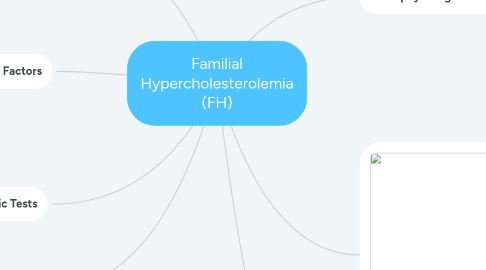Familial Hypercholesterolemia (FH)
by Arianny Perrino Lanz


1. Treatments
1.1. For FH heterozygotes: dietary restrictions liked reduced intake of saturated fats. Accompanied by bile acid-absorbing resins, such as cholestyramine, along with statin class of drugs, such as simvastatin (McCance & Huether, 2015).
1.2. For FH homozygotes: plasma exchange every 1 to 2 weeks, combined with with drug therapy. Liver transplant is a another but limited option (McCance & Huether, 2015).
2. Causative Factors
2.1. Mostly caused by a reduction in the number of LDL receptors on cell surfaces. Due to the lack of these receptors cellular cholesterol uptake is reduced and circulating cholesterol levels increase (McCance & Huether, 2015).
2.2. Homozygotes have few or no LDL receptors (McCance & Huether, 2015).
3. Risk Factors
3.1. More often seen earlier in males than females
3.2. Data suggested that 75% of men with FH developed CAD and 50% died of a myocardial infarction by age 60 (McCance & Huether, 2015).
3.3. In women the percentages were lower 45% and 15% respectively (McCance & Huether, 2015).
4. Diagnostic Tests
4.1. Can be diagnosed both clinically and genetically
4.1.1. A clinical diagnosis can be made through a lipid test to measure LDL levels, a physical exam and a family history (Familial Hypercholesterolemia, n.d.)
4.1.2. A genetic diagnosis can be made by testing for the three genetic mutations responsible for this disease (Familial Hypercholesterolemia, n.d.).
5. Phatophysiologic Ethiology
5.1. Is an important cause of heart disease, causing 5% of myocardial infarctions (McCance & Huether, 2015).
5.2. Autosomal dominant disorder characterized by a high plasma level of low-density lipoprotein cholesterol (LDL) (Kullo, n.d.).
6. Genetic Details
6.1. This example shows the molecular basis of familial hypercholesterolemia with dominant pattern of inheritance: impaired low-density lipoprotein cholesterol clearance due to variations in LDLR, APOB, PCSK9 (Kullo, n.d.).
6.1.1. FH is caused by a mutation in one of three genes the low-density lipoprotein cholesterol receptor (LDLR), apolipoprotein B gene (APOB), or a gain-of-function mutation in the gene for proprotein convertase subtilisin/kexin type-9 (PCSK9) (Kullo, n.d.).
